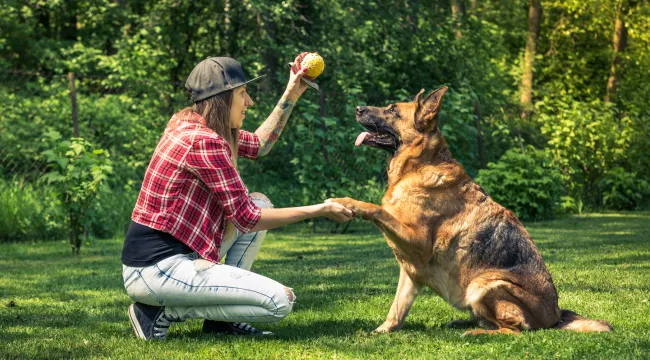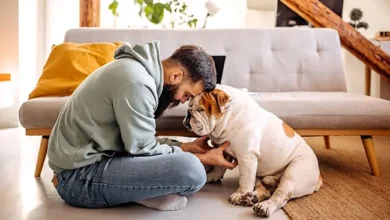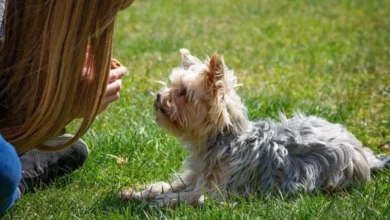Why Training Is Essential for Minimizing Aggressive Dog Behavior

Each day, canine behavior professionals hear stories of dogs displaying aggressive behavior, such as growling or biting. While many people understand the importance of providing their pup with love and care, far too often owners neglect one key component in mitigating this unwanted behavioral pattern—training. Training can help promote respectful relationships between dogs and humans alike, while also teaching aggression to stay in the past rather than become a prominent aspect of your furry friend’s personality.
In this blog post, we will be exploring how training is an essential tool for minimizing aggressive dog behavior and creating a safe and enjoyable environment in which man’s best friend can flourish!
Understand The Reasons Behind Aggression In Dogs
Dogs are known to be loyal companions to their owners, but sometimes their behavior can be unpredictable and aggressive. It’s important for pet owners to understand the root causes of this behavior to create a safe and calm living environment for everyone in the household. Many factors can contribute to aggression in dogs, such as fear, stress, lack of socialization, and even medical conditions. It’s important to identify these underlying causes and work with a professional to develop a plan to address them.
Through proper training and guidance, most dogs can overcome their aggression and become happy and well-adjusted members of the family. A little understanding and patience can go a long way in helping your furry friend live their best life. The experts from a reputable personal injury law firm note that dog bites can lead to lawsuits, so it’s important to take action and get the necessary training for your pup. It’s better to be safe than sorry.
Learn How To Recognize Signs Of Aggression In Dogs
Dogs are incredible companions, but it’s crucial to know how to recognize signs of aggression to prevent any dangerous situations. Aggression can stem from various sources, such as fear, frustration, or territoriality. Some signs of aggression in dogs may include growling, snarling, and showing teeth. It’s important to understand that dogs communicate through their body language, so it’s crucial to pay attention to their posture, eye contact, and tail position.
Knowing these signs can help prevent potential aggression from escalating and keep both you and your furry friend safe. By recognizing early signs of aggression, you can intervene and take appropriate steps to address your dog’s behavior.
Create A Positive Environment For Your Dog
As a responsible dog owner, it’s important to create a positive environment for your furry friend. Providing your dog with regular exercise is a great way to keep them happy and healthy. Not only does exercise help with weight management, but it can also reduce anxiety and strengthen the bond between you and your dog. Training is also an essential part of creating a positive environment. Teaching your dog basic commands like sit, stay, and come can make them more obedient and well-behaved.
Lastly, socialization is crucial for dogs to thrive in their environment. Introducing your dog to other dogs, people, and new surroundings can help them become more confident and well-adjusted. By prioritizing exercise, training, and socialization, you can create a perfect and positive environment for your beloved furry companion.
Establish Boundaries With Your Dog To Keep Them Safe And In Control
Dogs are man’s best friend, but it’s essential to establish boundaries with them to avoid unwanted situations. Training your dog and teaching them to understand their limits keeps them safe and under control. Boundaries could include not allowing your dog to jump on people, not allowing them to leave your yard unless on a leash, always having them on a leash in public, and more. Setting boundaries will not only help to protect your dog from harm but also keep those around them safe. Remember that a well-trained dog is a happy dog, and boundaries are a vital part of their training. With patience and consistency, your dog will learn and respect the boundaries you set for them, making everyone’s life smoother and more enjoyable.
Utilize Positive Reinforcement Techniques When Training Your Dog
Training your furry friend can be a fun and rewarding experience, but it can also come with its own set of challenges. One great way to get the results you want is to utilize positive reinforcement techniques. By using rewards and praise for good behavior, you can encourage your pooch to behave in the way you want them to. Positive reinforcement can include treats, verbal praise, and even physical affection. When you consistently reward positive behavior, your dog will be more likely to repeat those actions in the future.
It’s important to keep in mind that training takes time and patience, but with the right techniques and mindset, you’ll have a well-behaved companion in no time! With a little bit of effort and understanding, you can turn your aggressive pup into a happy and loving animal.
Learn How To Correctly Address Aggressive Behaviors
Aggressive behaviors can be difficult to deal with, but it’s important to remain calm and address the situation correctly. When dealing with aggressive behavior from your dog, it’s best to stay away from physical punishment. Instead, start by speaking in a low and soothing voice so that your dog doesn’t become more agitated. If possible, redirect your pup’s attention to something else or slowly back away from the situation. It’s also important to provide your dog with a positive outlet for their energy, such as toys and plenty of exercise. With patience and consistency, you can help your dog overcome any aggression issues and ensure that everyone is safe.

Aggression in dogs is a serious, yet complex issue and the consequences of ignoring it can be devastating. With time and patience, dog owners can take proactive steps to reduce aggression in their pets. Educating yourself about the ups and downs of canine behavior, establishing boundaries, and implementing positive reinforcement methods are all proven techniques to help reduce aggression. Although there is no single solution that will completely eliminate aggressive behaviors, by creating a safe and secure environment for your pet, you’ll increase their chances of living a happy and healthy life.
By understanding how aggression develops, learning how to recognize signs in your own dog, providing training and socialization opportunities, understanding the power of redirection rather than punishment for undesirable behaviors, setting boundaries, and reinforcing positive behaviors with rewards – you will have a much better chance at keeping your dog free from negative behaviors like fear-motivated or unwanted aggression.



